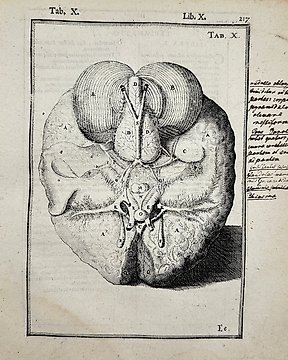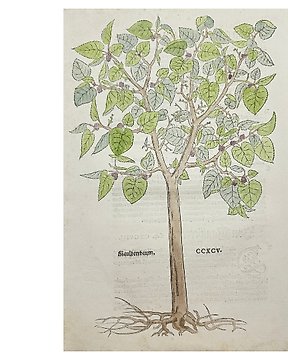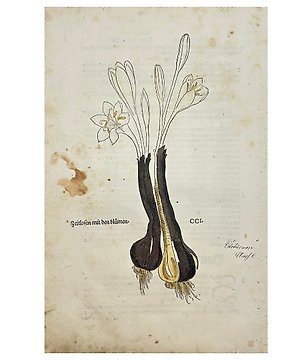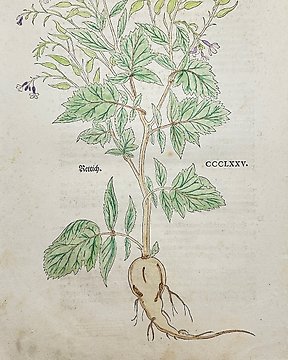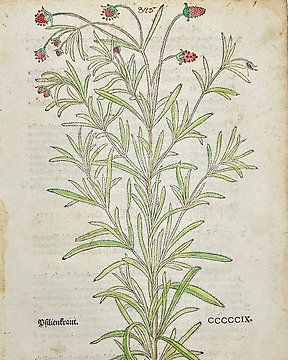Wonderful item perfectly described
Ver traducciónJustus Heurnius - De legatione evangelica ad Indos - 1618
N.º 85476439



(THEOLOGY, MISSIONS, FAR EAST, BINDING) JUSTUS HEURNIUS (JOOST VAN HEURNE, 1587 - 1651/2)
De legatione evangelica ad Indos capessenda admonitio […]. Lugduni Batavorum, ex Officina Elzeviriana, 1618.
§ 8vo, [20], 300, [4] pgs.; sign.: *8, **2, A-T8. Wonderful remboitage binding (dating back to the 1760s-70s) in brown morocco leather with gilt-stamped coat of arms of Cardinal Carlo Rezzonico (1724 - 1799) on both covers.
Scarce, first and only edition of this peculiar and interesting treatise concerning the necessity of Christianizing the East Indies.
This Admonitio presents the chance to open missionary activities in the territories recently conquered by the VOC in East Asia. According to Heurnius, the Christianization of people should have been promoted on the model of life of the officers of the East India Company, who should have led a modest existence inspired by evangelical principles. Other essential characteristics of this evangelization project included the opening of schools for the natives and the translation of sacred texts into local languages.
Justus Heurnius was born in Leiden into a family of well-known physicians and intellectuals. After his studies, he made a trip to France and Great Britain, which inspired his plan for missionary activities in the East Indies. Once back home, he began attending serious theological studies, graduating again in 1618 at the University of Gröningen. In 1620 he was ordained a minister and assigned to Kalslagen, but in the meantime, thanks to the interest of Sebastiaen Danckaerts (1592/3 - 1634), one of the pioneers of the Dutch missions in the East Indies, in 1624 Heurnius was sent to Batavia (today Jakarta) to organize the local Dutch Church. During the voyage, his ship made a stopover at the Cape of Good Hope, and Heurnius took the opportunity to draw and describe some plants, thus becoming the first European to write about South African flora. In Batavia he organized religious service for both Europeans and for the Malaysians and the Company’s laymen. Since many of them were Chinese, he began compiling the first Chinese-Dutch dictionary and translated the Creed, the Ten Commandments and the Lord’s Prayer into Chinese.
The defence of the independence of the Church from the interference of the Company put him in conflict with the colonial government, thus in 1630 he was sent to the Coromandel Coast. After two years, he returned to Batavia and subsequently extended his work to some islands, first Ambon then the Lease Islands (Moluccas archipelago). During this period, he translated chapters of both the New and the Old Testament into Malay and since sixteen different churches depended on his jurisdiction, he moved continuously trying to spend some time in each of them. The success of the school he founded, and his great religious zeal provoked the hostility of the Muslims, thus in 1635 he was forced to move away from the Lease Islands following a poisoning that caused him a temporary paralysis. Only one year later he was able to resume pastoral visits to the islands, staying in Indonesia until 1639. Upon returning to The Netherlands, he became minister in Wijk bij Duurstede (near Utrecht), where, together with Albert Cornelisz Ruyl and Jan van Hasel, completed the translation of the New Testament into Malay (or. ed. De vier Heylighe Euangelien. Amsteldam, Gedruckt door Ordre van de E. E. Heeren Bewint-hebberen der Oost-Indische Compagnie, 1651).
MARSDEN, p. 203; OCLC 993445770 (for the work); J. GUIGARD, Nouvel armorial du bibliophile, I, p. 356 (for the binding).
(THEOLOGY, MISSIONS, FAR EAST, BINDING) JUSTUS HEURNIUS (JOOST VAN HEURNE, 1587 - 1651/2)
De legatione evangelica ad Indos capessenda admonitio […]. Lugduni Batavorum, ex Officina Elzeviriana, 1618.
§ 8vo, [20], 300, [4] pgs.; sign.: *8, **2, A-T8. Wonderful remboitage binding (dating back to the 1760s-70s) in brown morocco leather with gilt-stamped coat of arms of Cardinal Carlo Rezzonico (1724 - 1799) on both covers.
Scarce, first and only edition of this peculiar and interesting treatise concerning the necessity of Christianizing the East Indies.
This Admonitio presents the chance to open missionary activities in the territories recently conquered by the VOC in East Asia. According to Heurnius, the Christianization of people should have been promoted on the model of life of the officers of the East India Company, who should have led a modest existence inspired by evangelical principles. Other essential characteristics of this evangelization project included the opening of schools for the natives and the translation of sacred texts into local languages.
Justus Heurnius was born in Leiden into a family of well-known physicians and intellectuals. After his studies, he made a trip to France and Great Britain, which inspired his plan for missionary activities in the East Indies. Once back home, he began attending serious theological studies, graduating again in 1618 at the University of Gröningen. In 1620 he was ordained a minister and assigned to Kalslagen, but in the meantime, thanks to the interest of Sebastiaen Danckaerts (1592/3 - 1634), one of the pioneers of the Dutch missions in the East Indies, in 1624 Heurnius was sent to Batavia (today Jakarta) to organize the local Dutch Church. During the voyage, his ship made a stopover at the Cape of Good Hope, and Heurnius took the opportunity to draw and describe some plants, thus becoming the first European to write about South African flora. In Batavia he organized religious service for both Europeans and for the Malaysians and the Company’s laymen. Since many of them were Chinese, he began compiling the first Chinese-Dutch dictionary and translated the Creed, the Ten Commandments and the Lord’s Prayer into Chinese.
The defence of the independence of the Church from the interference of the Company put him in conflict with the colonial government, thus in 1630 he was sent to the Coromandel Coast. After two years, he returned to Batavia and subsequently extended his work to some islands, first Ambon then the Lease Islands (Moluccas archipelago). During this period, he translated chapters of both the New and the Old Testament into Malay and since sixteen different churches depended on his jurisdiction, he moved continuously trying to spend some time in each of them. The success of the school he founded, and his great religious zeal provoked the hostility of the Muslims, thus in 1635 he was forced to move away from the Lease Islands following a poisoning that caused him a temporary paralysis. Only one year later he was able to resume pastoral visits to the islands, staying in Indonesia until 1639. Upon returning to The Netherlands, he became minister in Wijk bij Duurstede (near Utrecht), where, together with Albert Cornelisz Ruyl and Jan van Hasel, completed the translation of the New Testament into Malay (or. ed. De vier Heylighe Euangelien. Amsteldam, Gedruckt door Ordre van de E. E. Heeren Bewint-hebberen der Oost-Indische Compagnie, 1651).
MARSDEN, p. 203; OCLC 993445770 (for the work); J. GUIGARD, Nouvel armorial du bibliophile, I, p. 356 (for the binding).
- 4
- 1
- 0
Very citified
Ver traducciónTutto bene, grazie.
Ver traducciónNão era precisa, nem completa, a descrição feita.
Ver traducciónPerfetto
Ver traducción
